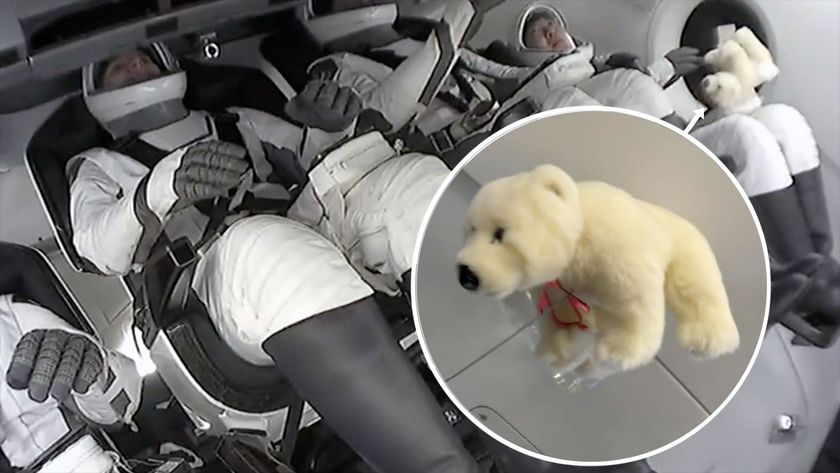Arthur C. Clarke’s '2010' Still Beyond Reality
Theyear 2010 has arrived, but humans have yet to travel out to the gas giants ofour solar system as portrayed by Arthur C. Clarke in his book "2010:Odyssey Two" ? much less unearth alien artifacts on the moon.
Clarkewas more than just a sciencefiction legend ? he was a physicist, and in 1945, the same year he sold hisfirst story, he was the first to propose the concept of geostationarytelecommunications satellite networks, more than a decade before the firstorbital rocket flight. He died in 2008 at age 90.
Clarke?sbook ?2010? debuted in 1982 as a sequel to his iconic work ?2001: A SpaceOdyssey.?
Now,28 years later, the real 2010 leaves much to be desired. Let's see how far wehave to go before reaching Clarke's vision of our present:
The power of the sun
In"2010," the lead characters venture out to Jupiter employingspacecraft equipped with "the Sakharov drive," which uses "a pulsedthermonuclear reaction to heat and expel virtually any propellantmaterial."
Innuclear fusion, atomic nuclei are forced to fuse together, which can generatean extraordinary amount of power when a fraction of the mass of these atomsgets converted into energy, following Einstein's famous equation: E=mc^2. TheSakharov drive, named after Russian nuclear physicist and political dissidentAndrei Sakharov, uses this energy to heat and expel liquid hydrogen andpotentially methane, ammonia and even water.
Get the Space.com Newsletter
Breaking space news, the latest updates on rocket launches, skywatching events and more!
Scientistshave yet to master thermonuclearpower. Still, the strategy the Sakharov drive employed ? inertialconfinement fusion, which uses lasers to heat and compress pellets of fuel ? could see a majoradvance in 2010. The largest and most energetic inertialconfinement fusion system built to date, the National Ignition Facilityin California, is set to begin experiments this year to reach the long-soughtgoal of "ignition," producing more energy than was put in to startthe reaction.
Alienlife in our backyard
While"2001" suggest that alien life might exist, "2010"portrayed aliens evolving right in our own solar system, both deep in theatmosphere of Jupiter and the underground oceans of Jupiter's moon Europa. Lifeon alienmoons has long been a staple of science fiction, and the recent sci-fiblockbuster "Avatar" is set on a jungle moon of a fictional planetorbiting the real Alpha Centauri A.
Although wehave no way of peering into Jupiter to look for life, most planetary scientistsdo believe oceans exist beneath Europa's surface. These subterranean seas arekept warm by the incredible tidal forces churned up by Jupiter's gravitationalpull.
Hibernation
To save onresources during the long voyage to the outer planets, crews relied onhibernation. Although suspendedanimation remains out of reach, scientists have actually made progress inthe field.
Researcher Mark Roth of the Fred Hutchinson Cancer Research Center inSeattle and his colleagues are conducting research to put humans into a hibernation-likestate by having people inhale hydrogen sulfide. Paleontologist Peter Ward atthe University of Washington at Seattle even suggested genetic engineeringhumans for the types of brain or nervous systems that help one to go intohibernation.
"My mind is going. I can feel it."
Inthe novel, scientists reboot HAL, the psychotic artificialintelligence that killed nearly all the astronauts in "2001." Injust a few days, HAL not only regains speech, facial recognition, speechrecognition and emotion recognition, but can also once more reason, understandand carry out conversations, and control a spaceship. We also discover thereason for HAL's killing spree ? the contradictory orders the computer wasgiven led to "what would be called, in human terms, a psychosis ?specifically, schizophrenia."
WhenClarke wrote "2001" in the 1960s, a number of computer scientistswere optimistic that machines with HAL's capabilities might soon exist, andMarvin Minsky, co-founder of the MIT Artificial Intelligence Laboratory, was anadvisor on the film. In 2010, however, only a handful of these breakthroughshave been reached, such as speech and facial recognition. No one has a machinecapable of commonsense reasoning, much less capable of then going crazy.
Still,fantastic advances havebeen made in computing over the years. Last year IBM even claimed it has a computer system that can simulate the thinking powerof a cat's brain with 1 billion neurons and 10 trillion individual learningsynapses.
Who knows?Maybe humanity could have developed artificial intelligences, nuclear-poweredspaceships and moon bases if we had alien monoliths guiding our evolution too.
- Video:Arthur C. Clarke ? To Plan For A Century
- 10Technologies That Will Transform Your Life
- TheEssential Arthur C. Clarke Library
Join our Space Forums to keep talking space on the latest missions, night sky and more! And if you have a news tip, correction or comment, let us know at: community@space.com.

Charles Q. Choi is a contributing writer for Space.com and Live Science. He covers all things human origins and astronomy as well as physics, animals and general science topics. Charles has a Master of Arts degree from the University of Missouri-Columbia, School of Journalism and a Bachelor of Arts degree from the University of South Florida. Charles has visited every continent on Earth, drinking rancid yak butter tea in Lhasa, snorkeling with sea lions in the Galapagos and even climbing an iceberg in Antarctica. Visit him at http://www.sciwriter.us










